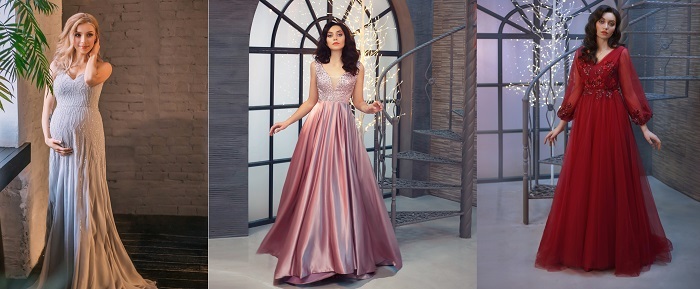

A tuck is a little fabric fold that is used to embellish clothing. The chest area of a blouse or festive men’s shirt is typically where tucks are sewn vertically, parallel, and closely together. You can also use a string to construct the tuck. Small pleats define the silhouette, draw attention to desired places, and conceal darts. In both men’s and women’s fashion, tucks can be seen on shirts, blouses, and dresses. They are used to embellish white garments and traditional costume fashion. Tucks are appearing more frequently on the catwalks, which is also related to the trend towards folkloristic blouses and dresses. Strict tucks enhance the elegance of purist forms. There are several types of tucks described below.

It is an even-width material fold that is firmly held in place on the right side of the garment by a machine stitch. It serves as a way to fit the clothing to the body, keep it full, or add decorative elements to the garment. To manage fullness or add ornamental effect at shoulders, waistlines, yokes, pockets, or cuff sleeves, for example, groups of tucks are utilized. The partially sewn tucks serve to shape the clothing. These are also used in children’s clothing to allow for growth. Tucks add body to thin fabrics and textural interest to basic materials.
Pin tucks, dart tucks, blind tucks, and spaced tucks are a few of the most popular tucks. These tucks are relatively straightforward and are available in various widths and alignments. The breadth of a tuck is determined by measuring the distance between the fold and the stitched line because a tuck is represented by a single fold. The fold of the tuck might be found on the inside or outside of the garment (according to design specifications).
Dart tucks can be used to manage shape and fullness and can have an impact on how a garment fits, despite the fact that most of the tucks discussed above are decorative in nature. The other sorts of tucks are listed below.
Pin tucks are very small tucks with a width of 1/8 inch that are stitched from the fabric’s folded edge. They are made to be quite parallel and close to one another. To make pintucks, use a pintuck foot, a standard foot, or an edge joining foot. You must have the double or twin needle attached while using the pintuck foot.
A basic tuck is folded the same way as a pin tuck, but a blind tuck is typically bigger and aligned so that the folds of all the tucks meet. In other words, if you look at the raw edge of a blind-tucked fabric, the next fold begins where the previous fold ended.Because of this, blind tucks maintain the same space between folds and are always evenly aligned.
These are the styles of tucks used to conceal fullness in clothing. To allow the upper portion where the tucks are produced to draw in the cloth, these tucks are stitched for a few inches and then stopped.
By sewing it down and releasing it at one place, or in the case of a double-pointed tuck, at two locations, the dart tuck is a unique tuck that is typically employed to manage fullness. A dart tuck can affect the shape and fit of a garment, even though it is also ornamental. Dart tucks around the bust, waist, and hip region are common in dresses and skirts. Depending on the design you are working on, a dart tuck can be stitched and released on either one side or both sides. On dart tucks, top stitching is also typical.
These tucks are slightly wider apart than pin tucks and have a 14-inch width from the folded edge of the fabric. Tucks are created by folding the cloth in half and sewing straight lines along the folded edge, much like you would when make pleats. Narrow and wide tucks are both possible.
These are tucks that produce a bubble effect when a steam iron is applied to the back of the tucks after they have been put together at random intervals.
These are just straightforward tucks that are stitched across the fabric, creating waves as they are stitched back and forth.
As the name implies, these tucks cross each other. Tucks are first performed vertically as normal, then at certain intervals, tucks are also performed horizontally (perpendicular to the straight tucks).
These tucks, which provide the appearance of windows in the fabric, are constructed similarly to cross tucks, with the exception that they are pressed in opposing directions before sewing the cross stitching. Make sure the tucks are not twisted or distorted.
The edges of these tucks have been embellished with yarns, cords, or embroidery thread. To sew the tucks and the cord together, you must use a narrow zigzag stitch. As you sew from the top, the cord is tucked under the fold.
A straight-line tuck is made by folding cloth and stitching it while holding it down in the shell tuck technique. The little rounded edge created by altering the pin tuck is known as a shell tuck. On the front of blouses, primarily. Depending on the fabric being sewn, Shell Tuck’s pattern takes on a different appearance.
These tucks each have lace trim attached to the rear of them. The width of the lace trim should be taken into account while marking the tucks.
All the above tucks can be made either lengthwise or across the fabric’s grain; tucks in the bias direction, however, can be a little tricky to handle. To ensure that the tucks are uniform, mark with a washable marking material, such as chalk or a washable pen. Fundamentally, tucks are a good way to give any garment a high-end design aspect. They are typically used for ornamental purposes.